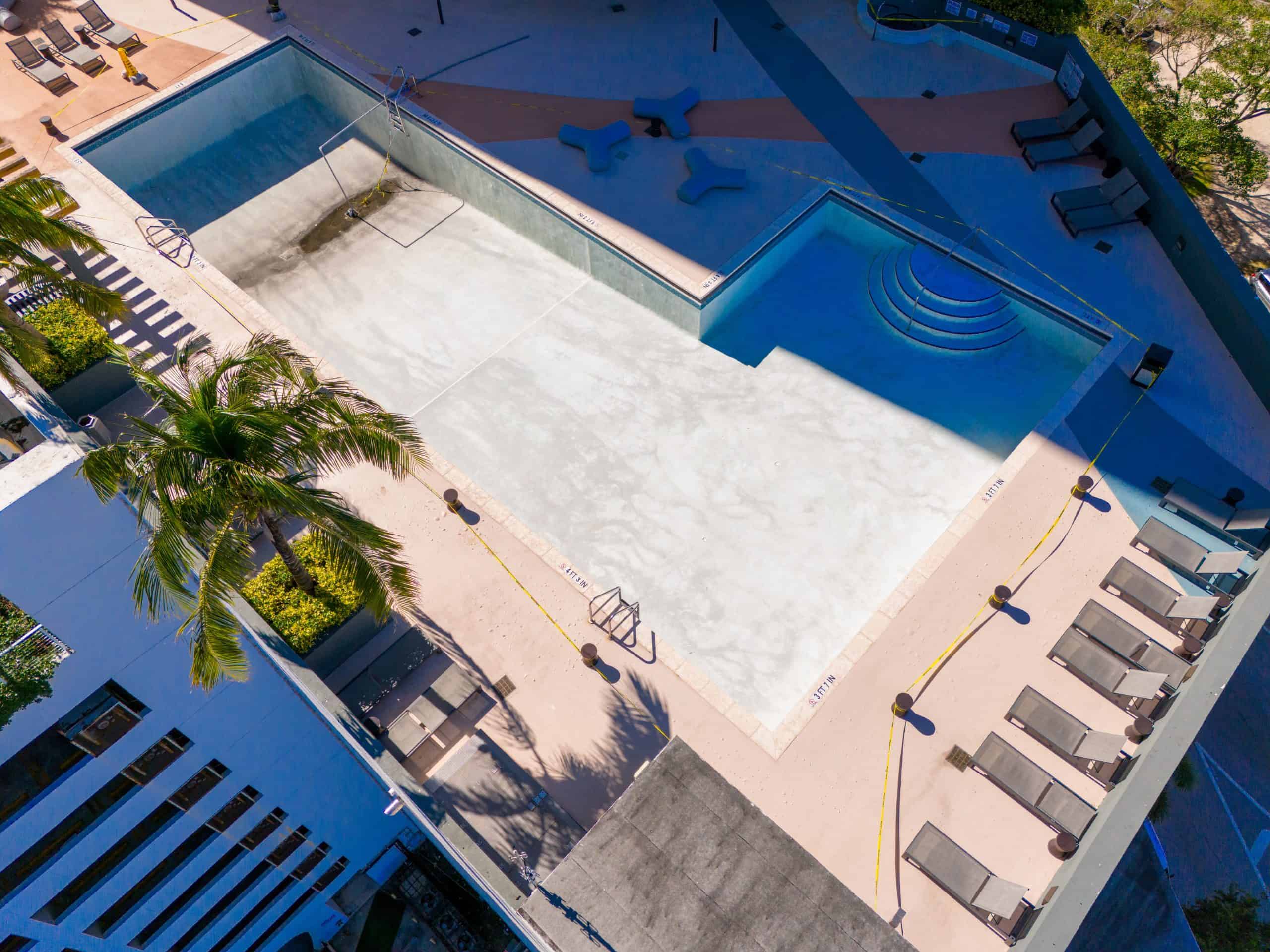Transform your worn, rough pool surface into a smooth, beautiful finish that lasts for decades in Florida’s demanding climate.


Your pool becomes what it was meant to be – a source of enjoyment, not constant worry about rough surfaces or water loss. No more avoiding the shallow end because the surface feels like sandpaper against your feet.
A properly resurfaced pool means consistent water levels, comfortable swimming, and a surface that can handle Florida’s year-round use without breaking down. Your equipment runs more efficiently when it’s not fighting against leaks or poor circulation caused by surface deterioration.
Most importantly, you get peace of mind knowing your investment is protected for the next 10-20 years, depending on the finish you choose.
We’ve been handling pool resurfacing in Broward County for years, dealing with the specific challenges that come with Florida’s climate. We understand how quickly surfaces deteriorate under intense UV exposure and how summer storms can accelerate existing damage.
Our team holds Certified Pool/Spa Operator certification and we use only materials proven to withstand South Florida’s demanding conditions. We’re not learning on your pool – we’ve seen every type of surface problem this area can create.
When you work with us, you get upfront pricing, flexible scheduling that works around your life, and a satisfaction guarantee that means we’re not done until you’re completely happy with the results.

First, we completely drain your pool and carefully prepare the existing surface. This means removing any loose or damaged material and creating the right foundation for your new finish.
Next comes surface preparation using professional-grade equipment to ensure proper adhesion. We fill any cracks, smooth rough spots, and prep the entire surface for the new material.
We apply the new finish using proven techniques that ensure even coverage and proper curing. Whether you choose plaster, quartz aggregate, or pebble finish, the application process is critical to getting the longevity you’re paying for. Finally, we refill your pool and balance the water chemistry so you can start enjoying your restored pool as soon as it’s ready.

Ready to get started?
Plaster remains the most popular choice for good reason – it’s cost-effective and lasts 7-10 years with proper maintenance. For homeowners wanting something more durable, quartz aggregate finishes provide better stain resistance and can last 10-15 years.
Pebble finishes offer the longest lifespan at 15-20+ years and provide a natural, textured appearance that many Regal Palm homeowners prefer. These finishes also tend to feel more comfortable underfoot than standard plaster.
The key in South Florida is choosing materials specifically designed to handle year-round pool use, intense UV exposure, and the chemical demands of maintaining proper water balance in hot, humid conditions. We only recommend finishes that have proven track records in this climate, not materials that might work elsewhere but fail under Florida’s demanding conditions.

Ready for a Pool You'll Love?
Contact us today for a free quote!
DCP Pool Services
Company
Useful Links